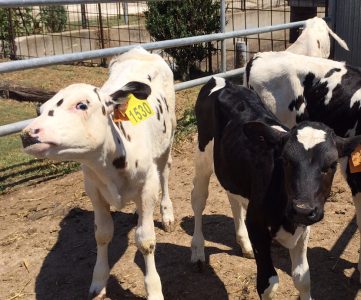Calves’ artificial breeding and feeding is a common practice within the dairy industry, but it must be done properly in order to take advantage of its benefits.
The period comprised from birth to weaning is extremely important in dairy cattle. This is due to the the strong correlation that exists between weight gain during this period and the future production levels of calves.
Ruminants have three forestomachs: rumen, reticulum and omasum; and a true stomach which is the abomasum. At birth, the abomasum is the most developed and functional portion of the calf’s digestive tract (the digestive physiology is similar to that of monogastrics during this period).
The objective of feeding during this stage is to achieve an adequate growth in calves, which allows optimal daily weight gains and a rapid development of the forestomachs, especially that of the rumen. As a result, they will transition from lactating calves to ruminants, and soon they will be able to feed on raw materials (such as fodder or feed) which have lower costs compared to milk.
Colostrum intake
Calves are usually separated from their mothers between 24 and 72 hours after birth due to management, health and economic reasons. During this period the bond between the mother and the calf is essential for ensuring their survival.
Colostrum is the the mammary gland’s first secretion after birth. It fundamental to ensure good health status in newborn calves. The first colostrum intake should occur within the first 6 hours of life.
Adequate colostrum intake allows to reduce disease onset during the productive life of the calf as a mature cow. As it is through colostrum that the calf will receive antibodies (immunoglobulins) to develop its immunity. Since the calf’s intestinal wall loses its absorption capacity for colostrum, becoming null after 24 hours post birth, it is key that colostrum intake occurs as soon as possible. This will allow the calf to absorb a greater amount of immunoglobulins.
Keep up to date with our newsletters
Receive the magazine for free in digital version
REGISTRATION
ACCESS
YOUR ACCOUNT
LOGIN
Lost your password?
